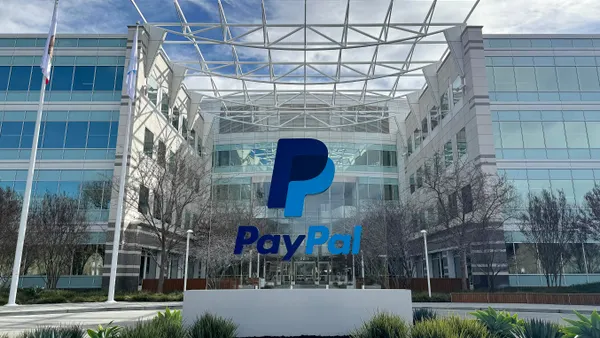Dive Brief:
- Buy now, pay later company Zip pointed to features within its app as the drivers for growth in its U.S. transaction volume and revenue during the first half of its fiscal year, according to the company’s earnings presentation released Tuesday.
- The two features mentioned were gamified repayments, which involves adding game-like elements to encourage borrowers to pay off their purchases, along with variable first installments, to provide customers with more flexibility.
- The Australian BNPL firm also flagged transaction volume growth for its physical card in the U.S. during the period. The card accounted for about a third of in-store transaction volume in the first half of the fiscal year, according to the presentation.
Dive Insight:
“We’ve had very good success from the product innovation that we’ve undertaken in the U.S.,” Zip’s Group CEO Cynthia Scott said during a Tuesday earnings call. “There’s really strong demand from customers and from merchants to have a sort of flexible consumer finance solution.”
The app features helped Sydney-based Zip boost U.S. revenues, despite the company’s U.S. customer base staying relatively stable at about 4 million users during the first half of its fiscal year, according to Scott. Total U.S. revenue for the period was AUD $214.7 million, or US $139.4 million, and the company posted a net profit of AUD $73 million, or US $47.4 million, according to the earnings presentation.
In the U.S., where the company competes with larger BNPL rivals, the company saw both a higher level of engagement and a higher average order value, according to Scott. “We anticipate that that will continue,” she said.
U.S. revenues were also bolstered by Zip customers increasingly using the BNPL service in “higher margin channels,” such as through the app and in stores, Scott said.
But that assertion drew scrutiny from Morningstar Equity Analyst Shaun Ler. “We question how much growth here came from management’s claim of a mix shift toward higher-margin spending avenues like ‘the app and instore,’ as they seem to be the most common spending avenues for customers,” Ler wrote in a Tuesday note to investors.
The BNPL firm made a series of changes during its last fiscal year in a quest for profitability. Zip shed employees and sold off businesses in multiple countries, to focus on the U.S., Australia and New Zealand. Scott was appointed to the CEO role last August, replacing company co-founder Larry Diamond, who became U.S. CEO.
Ler wasn’t convinced the company had found sustainable revenue just yet. Earnings improvements “were driven by defensive measures like higher user fees, cost reductions, and selective customer onboarding,” Ler said in the note. “While these measures may appease investors seeking profitability, implementing them in a commoditized market could undermine Zip’s long-term competitive position.”
Zip did not immediately respond to questions about the growth of its U.S. business.











